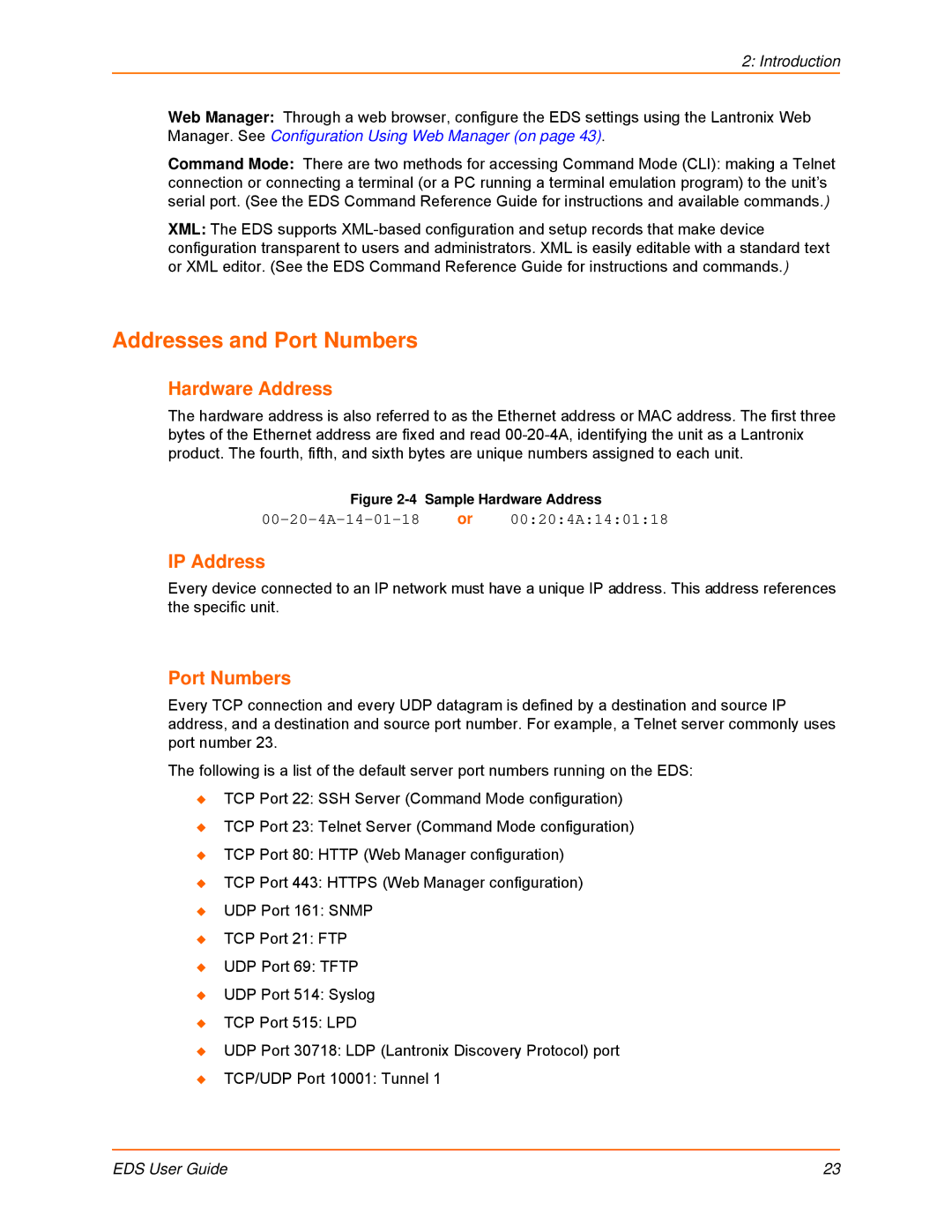
2: Introduction
Web Manager: Through a web browser, configure the EDS settings using the Lantronix Web Manager. See Configuration Using Web Manager (on page 43).
Command Mode: There are two methods for accessing Command Mode (CLI): making a Telnet connection or connecting a terminal (or a PC running a terminal emulation program) to the unit’s serial port. (See the EDS Command Reference Guide for instructions and available commands.)
XML: The EDS supports
Addresses and Port Numbers
Hardware Address
The hardware address is also referred to as the Ethernet address or MAC address. The first three bytes of the Ethernet address are fixed and read
Figure 2-4 Sample Hardware Address
IP Address
Every device connected to an IP network must have a unique IP address. This address references the specific unit.
Port Numbers
Every TCP connection and every UDP datagram is defined by a destination and source IP address, and a destination and source port number. For example, a Telnet server commonly uses port number 23.
The following is a list of the default server port numbers running on the EDS:
TCP Port 22: SSH Server (Command Mode configuration)
TCP Port 23: Telnet Server (Command Mode configuration)
TCP Port 80: HTTP (Web Manager configuration)
TCP Port 443: HTTPS (Web Manager configuration)
UDP Port 161: SNMP
TCP Port 21: FTP
UDP Port 69: TFTP
UDP Port 514: Syslog
TCP Port 515: LPD
UDP Port 30718: LDP (Lantronix Discovery Protocol) port
TCP/UDP Port 10001: Tunnel 1
EDS User Guide | 23 |
